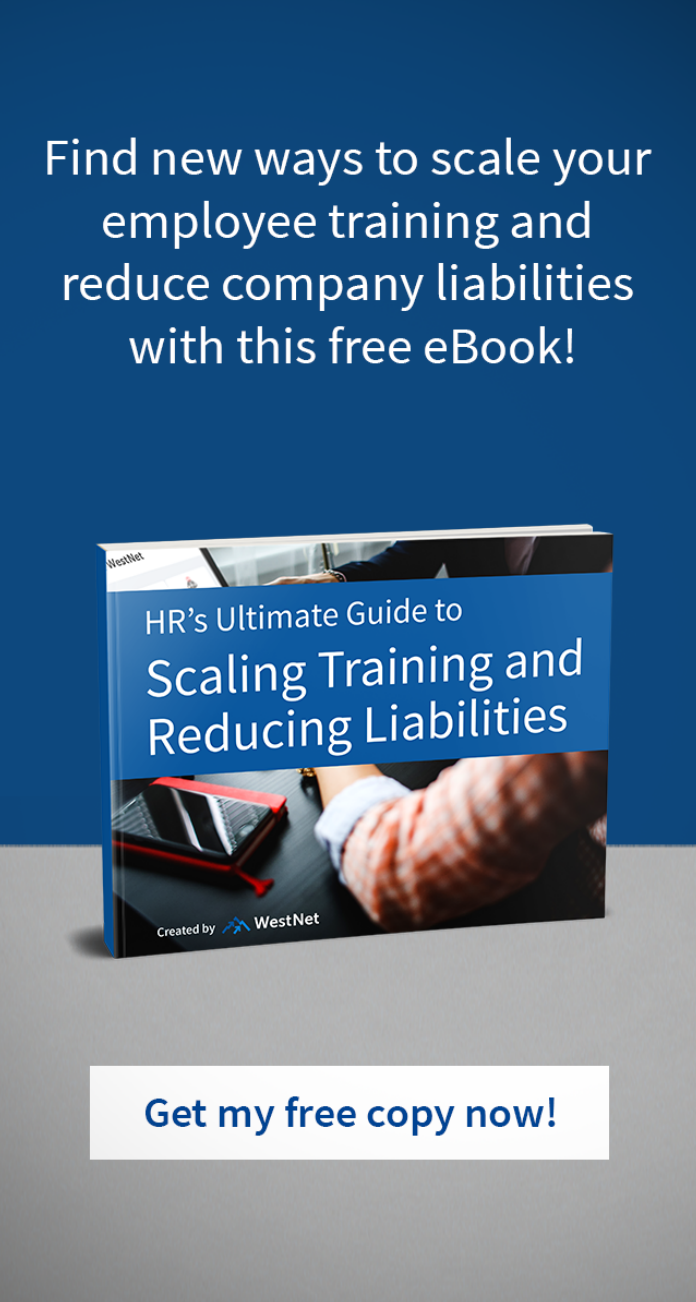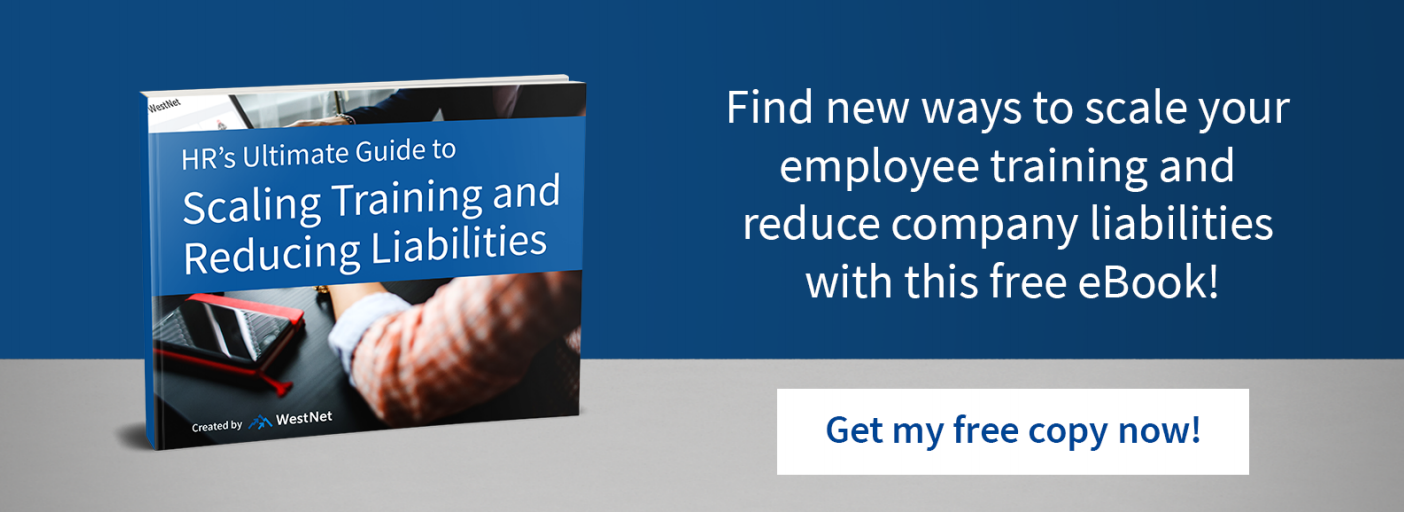According to OSHA, “in addition to their social costs, workplace injuries and illnesses have a major impact on an employer’s bottom line.” In fact, according to the OSHA website, “employers pay almost $1 billion per week for direct workers’ compensation costs alone.” That’s a significant investment—and a significant risk. Employers are obviously concerned—and responsible—for ensuring a safe workplace. But employees have a role to play here too. Importantly, employees need to be educated and informed on an ongoing basis of the responsibility they have for ensuring a safe environment, how to report safety concerns and how to respond in the event of a wide range of potential workforce safety insurance issues.
Workforce safety insurance can be ensured through the use of an effective LMS system with content designed to not only meet employees’ educational needs, but their content consumption needs as well.
Top Safety Issues Affecting Today’s Employers (and Employees)
Annually, Liberty Mutual compiles a list of the top 10 workplace hazards—those leading to the highest cost for employers. Overall, their data suggests, disabling workplace injuries cost businesses in the United States more than $1 billion—not per year, but each and every week! That’s significant. In 2018, the top 10 workplace hazards, in order from highest to lowest, are:
- Overexertion – injuries related to lifting, pushing, pulling, holding, carrying or throwing
- Falls on the same level – e.g. slipping on a wet floor
- Falls to a lower level – e.g. falling from a ladder or platform
- Being struck by an object or equipment
- Other exertions/bodily reactions – e.g. injuries from crawling, bending, reaching, etc.
- Roadway incidents involve vehicles
- Slips or trips (without falling)
- Being caught in/compressed by equipment
- Being struck against an object/equipment
- Repetitive motion
Clearly, while it may seem that manufacturing or farming-related businesses would be more prone to injuries, no business is immune. Even relatively sedentary office workers are subject to injuries related to falls or repetitive motion, for instance.
Every workplace is different and employees will be at risk for differing types of workforce safety insurance incidents. To get a better sense of what risks your company and its employees face, you can use OSHA’s $afety Pays tool to calculate the direct costs of injuries your employees may face. This understanding, combined with an assessment of the types of injuries your staff members are most at risk for can be a good starting point for educating employees to help minimize these risks.
Education Can Help
The best defense against workplace safety issues is a good offense. That offense should include timely and ongoing information and education to ensure that all employees understand the potential risks they face and know how to take steps to minimize, or avoid, those risks.
While workplace safety programs cannot be guaranteed to entirely eliminate 100 percent of all the potential dangers in a workplace, the National Safety Council’s data suggests that for every $1 invested in injury prevention, employers can expect a return of $2-6. That’s a significant return.
Ongoing communication and education is a must do for organizations hoping to avoid both the physical and monetary costs related to workplace safety risks. But, education needs to be ongoing—a “one and done” approach is simply not enough. EHSToday recommends the following tips to develop an effective safety training program:
- Make it relevant. Your company will have certain OSHA-required regulations that will impact the safety training you provide. In addition, though, you should consider other risks that exist within your workplace, or as part of employees’ jobs (e.g. those who may need to travel for business have risks outside the workplace that are still relevant).
- Ensure understanding. Safety rules and regulations, and steps to take to minimize risk, can be complex and sometimes confusing. That’s where effective communication comes into play. Take steps to minimize the complexity in your safety communications and training to ensure understanding.
- Be creative. Don’t just use one tool—e.g. a policy—as an attempt to educate and communicate with employees. Use multiple tools that combine to convey critical safety messages (hint: your LMS can help with this by allowing you to readily create various types of training and informational materials—e.g. videos, interactive quizzes, static documents, etc.).
- Train everyone. Safety training and education isn’t just for managers—it’s for everyone. In some cases, this may also include vendors and even customers or clients.
- Make training a continuous process. Safety training isn’t a “check the box” initiatives that can be ticked off a list of “to do’s.” To be most effective, it must be ongoing.
Another important must do for workforce safety insurance: continually evaluate and assess the effectiveness of your workplace safety communication and training efforts, making improvements and adjustments as needed to ensure continuous improvement. Evaluate both impacts on numbers of incidents, as well as feedback from managers and employees about how effective they felt that training was and how well it met their needs and preferences. Again, offering a variety of options can help ensure that different learning preferences among employees are adequately addressed.
Finally, engage employees regularly in conversations about workplace safety issues and milestones. This might involve both debriefing after an incident occurs to evaluate what could have been done to prevent the incident and how to prevent it in the future and getting together to celebrate and learn from best practices when injuries and incidents don’t occur.
How Learning Management Systems Can Help
Staying on top of all of the communication and education needs of your workforce can be a daunting task. That’s where an effective learning management system (LMS) can help. By automating the process of creating, disseminating, monitoring and evaluating your training and communication efforts you not only save time, but increase your ability to learn about what works well and what may not, allowing you to make ongoing adjustments to improve efficiency and effectiveness, and to eliminate costs. Addressing workforce safety insurance through these steps can provide peace of mind for you, and your employees.
WestNet Learning is an all-in-one, LMS solution to help growth and safety needs. Customized eCourses, analytics, reporting, and certifications help management & staff stay on top of what matters most with your workforce.
If you would like to learn more about workforce safety insurance and how WestNet can help, request a 1-on-1 walkthrough today!

